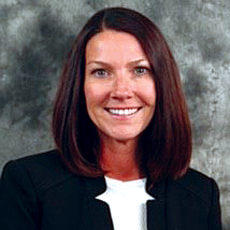
The Centers for Medicare & Medicaid Services’ Bundled Payments for Care Improvement (BPCI) initiative has handed skilled nursing facility professionals an opportunity to play a greater role in post-discharge care coordination. At the same time, it puts them in a position of greater financial and performance accountability.
Nationally, the average standardized payment amount per stay for all skilled nursing facilities is $10,919, with an average length of stay of 28 days. This is important given the parameters of BPCI’s Model 3, which involves a retrospective bundled payment arrangement where actual expenditures are reconciled against a target price for an episode of care.
The episode of care is triggered by an acute care hospital stay but begins at the initiation of post-acute care services with a skilled nursing facility, inpatient rehabilitation facility, long-term care hospital or home health agency, and entails all related services for a period of 30, 60 or 90 days after discharge.
In simpler terms, if a Medicare beneficiary stays for 20 days before returning to the community, the skilled nursing facility is responsible for the bundle of services provided to them for the entire 30 days, regardless of where the patient is located. For example, this would occur when a beneficiary with sepsis is admitted to a BPCI participating skilled nursing facility.
CMS agrees to pay a certain amount for the episode of care. If complications occur, and the patient transitions from home to an ICU, from there to the skilled nursing facility and back home again — incurring significantly more expense than CMS’s target amount — the skilled nursing facility is responsible for that additional cost.
The challenges this scenario presents have made partnering with innovative community-based palliative care programs a high priority. This is especially relevant when it comes to high-risk patients with advanced illness — those who don’t qualify for home healthcare or hospice. These are the patients who often return home and have unmet needs for care coordination and help with day-to-activities, the very services that would help them to avoid re-hospitalization. This is where community-based palliative interventions help to fill the care gap, providing much-need clinical and social support that enables patients to remain in the comfort of their own homes.
Reducing readmissions requires an integrated approach – one that involves transition coaching, coordination of services, close communication and coordination among stakeholders, and dedicated technology. These services are critical to reducing challenges that include accessing the primary physician, resolving conflicting plans of care, addressing medication-management issues, and improving the care transition process.
Local palliative care teams that include nurses and social workers supported by other clinician resources, provide home visits and telehealth care that help patients and their caregivers to overcome these challenges. They offer a specialized level of practical support that has been shown to not only reduce costs, but to also improve quality of life for both the patient and the family.
A new model of community-based care
One innovative program that would benefit the interests of both skilled nursing facilities and patients is Palliative Illness Management ™ – PIM™. PIM™ can help fill the care gap for Medicare beneficiaries who return to the community during the phase in which the skilled nursing facility remains responsible for the bundle of services provided to that patient.
The PIM™ strategy taps into the resources of existing dedicated community-based palliative care teams that typically reside as a separate service within local hospice and palliative care organizations. These highly skilled and specialized clinicians provide the PIM™ field-based engagement and support: they review symptoms, perform medication reconciliation, and discuss and document goals of care.
Consider the results of a one-year program that tested and validated PIM™ for 1,000 seniors enrolled in a Medicare Advantage plan:
- Overall reduction in healthcare expenditures 34%
- Lower hospitalizations 32%
- Reduced ICU days 37%
- Reduced hospital readmissions 61%
- Reduction related to earlier and appropriate election of the hospice Medicare benefit 15%
- Medicare benefit claims down per member per month 19%
PIM™ integrates and augments existing population health and case management resources, scaling their capabilities and bringing a sophisticated, specialized model while improving the predictability of quality and costs.
Nurse and social worker home visits and telephonic assessments include:
- Patient’s understanding of illness
- Medical and hospitalization/ED history
- Goals of care/advance care planning
- Functional status and activities of daily living
- Services in place or needed
- Symptom assessment
- Patient risk evaluation
- Medication review; adherence assessment
- Adequacy of home, family, safety and financial supports
The very acts of intervention, patient engagement and care transition coaching position PIM™ to improve care quality, address costs and reduce burdens associated with advanced illness.
By partnering with a company that delivers this level of specialized care, skilled nursing facilities can improve care coordination with clinical care teams trained to promote best practices; standardize care; facilitate communication between patients and providers to improve decision-making related to goals of care and advance care planning; make referrals to community resources; and manage pain, symptoms and medications. This approach not only leads to better patient outcomes, but also makes it possible for skilled nursing facilities involved in the BPCI program to avoid unnecessary expense.
This is the real path to reduce variation and inefficient or costly approaches to care that often lead to re-hospitalization. This unique level of engagement also promotes interaction with the primary care physician and health plan case manager, advancing shared decision-making and communications regarding what level of care people really want – or choose to forego.
It’s a new world order for skilled nursing facilities. The BPCI program has incentivized them to focus on acute and post-acute care between care centers, and develop community support systems. Fortunately, this comes at a time when advanced, community-based care models have become available.
Cyndi Seiwert is the chief operating officer at Turn-Key Health.




